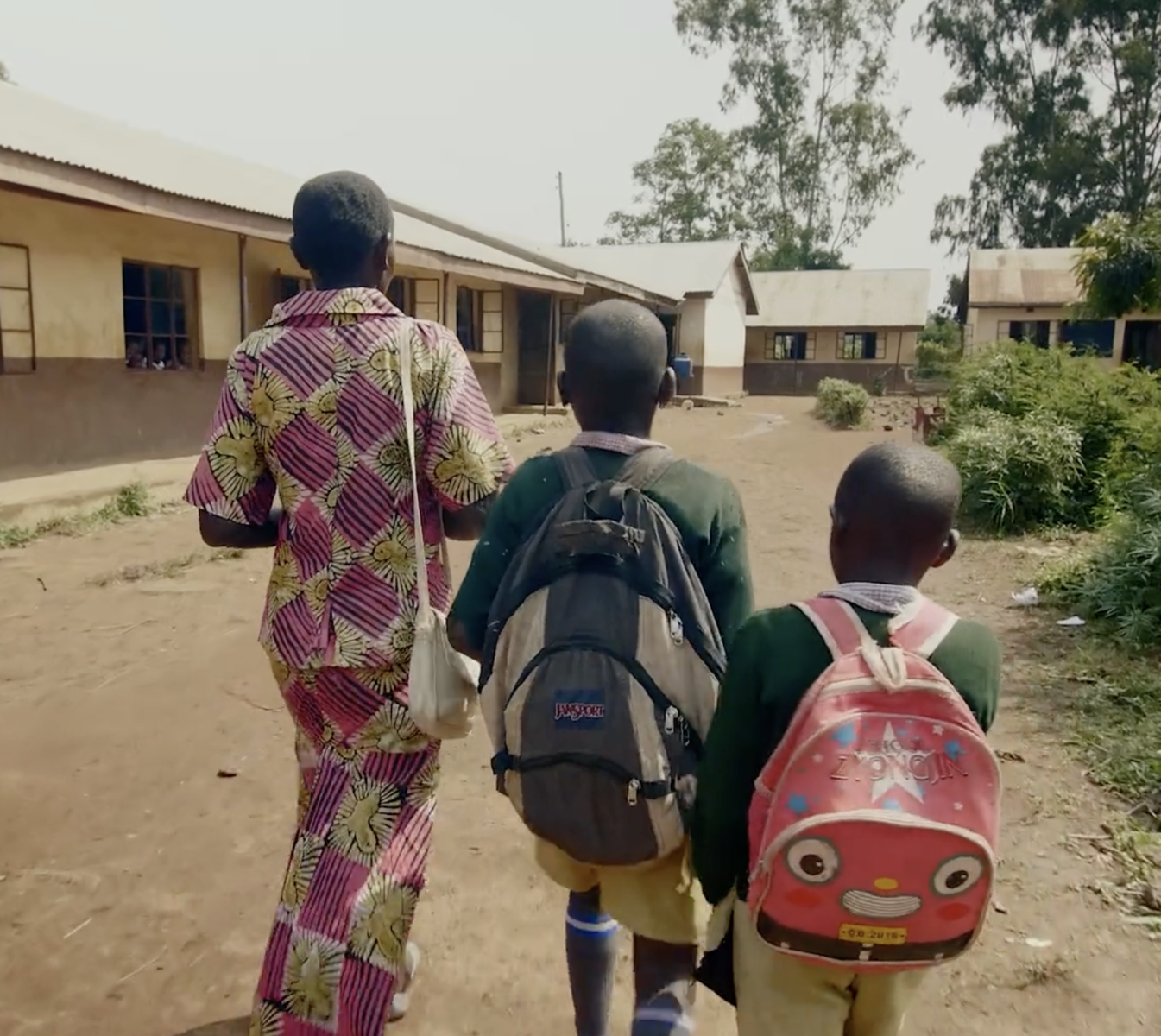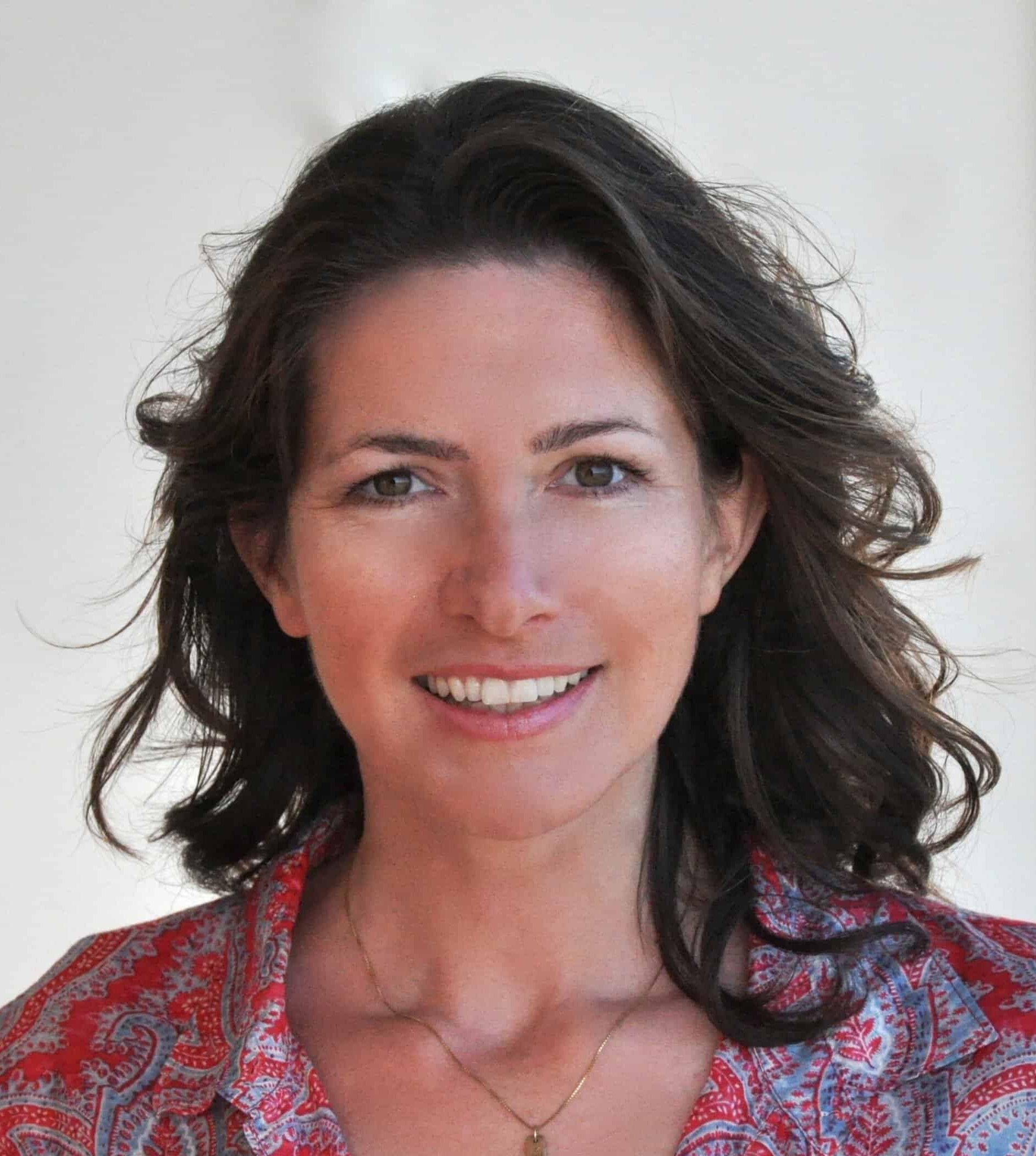A 32-year-old woman has made the trek to Matibabu Hospital in western Kenya with her five young children in tow. Though she has given birth to five babies, the widow has never before been screened for cancer. Her tall, slim figure dressed in a colorful cotton dress typical for Kenya, she lies down on the table in the simple exam room for her first cancer screening. Matibabu means “medicine” or “treatment” in Saheli.
“Preventative health care is simply not available for Kenyan women,” says Melissa Miskell, an OB/GYN from Texas and executive director of PINCC (Preventing Cervical Cancer Globally), an NGO dedicated to eliminating cervical cancer worldwide. “We see 50-year-old women who have never been screened.” Her team is in the rural hospital in the Lake Victoria Region to deliver new equipment for cancer screening and treatment, and to train the local health care staff.
But this particular exam brings devastating news: The young widow has stage four cancer, and her chances of survival are slim. The hospital can only offer her morphine for the pain.
One of PINCC’s young volunteer team members breaks down crying. “It is utterly heartbreaking to see that it’s too late,” she says in a documentary about the program. “I keep thinking of her young children. They are going to be orphans. This could all have been prevented.”
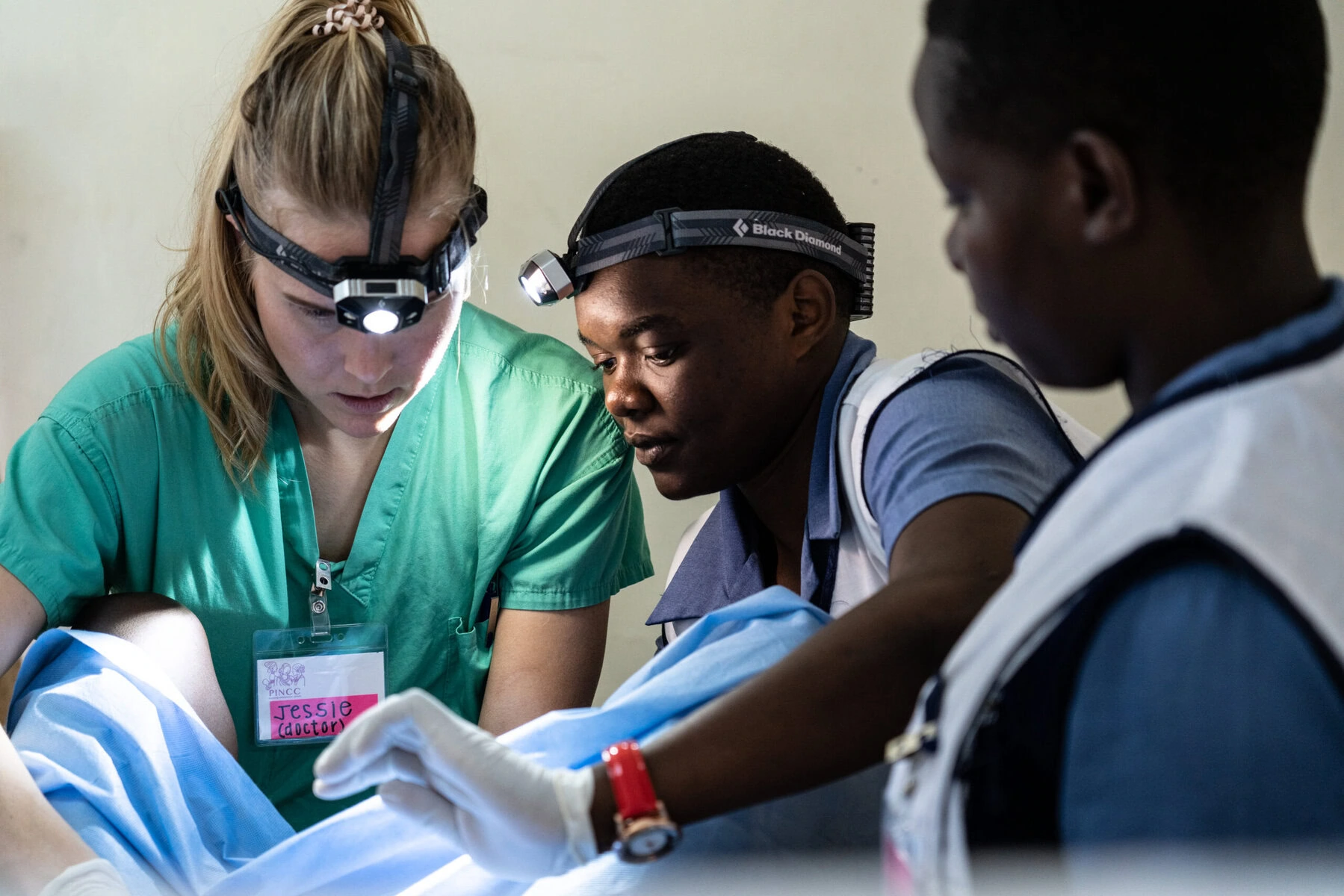
Few diseases reflect global inequities as much as cancer of the cervix. According to the World Health Organization (WHO), 350,000 women die from cervical cancer globally each year — one every minute and a half. Nearly 94 percent of the deaths occur in low- and middle-income countries.
“In the US, the fatality risk of a woman with cervical cancer is approximately two to four percent,” Miskell explains. “The fatality risk of a woman with cervical cancer in a low-income country is upwards of 50 percent.” What troubles Miskell and her team most is that the illness is completely preventable.
Therefore nonprofits like PINCC, Rotary International and the Clinton Health Access Initiative are scaling up their efforts to bring new technology for screening and treating cervical cancers to low-income areas, with the goal of eliminating it completely.
PINCC was established by gynecologist Kay Taylor in 2005 after a medical mission to Honduras. Taylor saw more fatal cases of cervical cancer in that one trip than she had during her entire career in the US. So she launched the first PINCC trip to Honduras in late 2005 with only three eager volunteers and began training local health care workers in cervical cancer screening and treatment at three Honduran clinics. Since 2017, executive director Melissa Miskell has expanded PINCC’s global reach and established programs in Uganda, Kenya, Bolivia, Tanzania, Guatemala, Cameroon, Cambodia, India and Nepal.
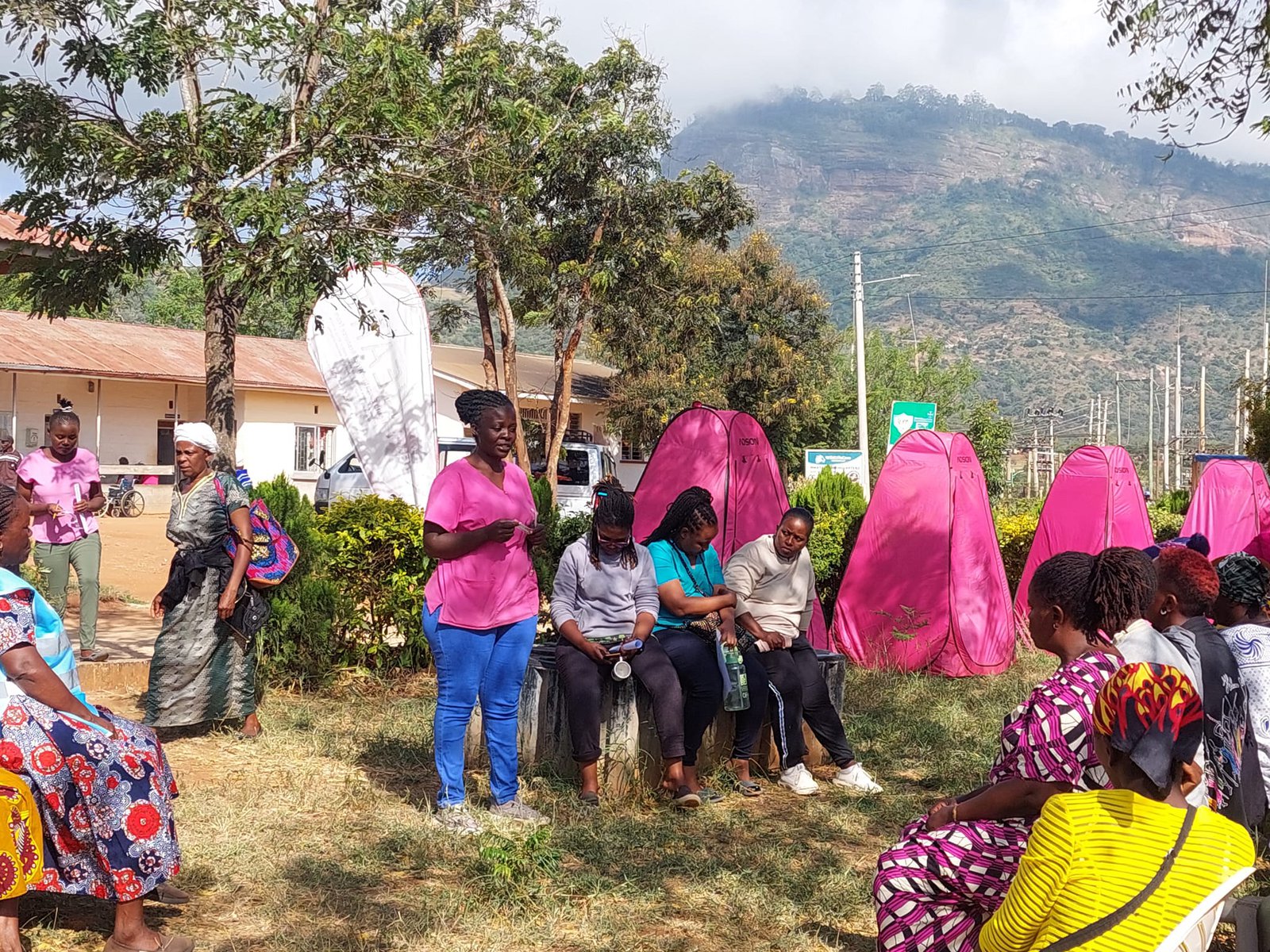
“Early detection is the key to controlling cancer of all types, but cervical cancer is the one cancer we can eliminate globally,” explains Richard Godfrey, a retired surgical oncologist and Rotarian in Fremont, California, who is on the board of PINCC and has been delivering equipment to Matibabu for Rotary since 2012. “Why? Like polio, it’s caused by a virus, the human papillomavirus (HPV).”
While an active immune system can clear the virus, a weak immune system fails to prevent HPV from causing cancer. This is why women with HIV face a sixfold increased risk of cervical cancer — and in Kenya, both HIV and HPV are widespread.
The WHO has set a goal to help all low-income countries achieve its triple-intervention targets by 2030: fully vaccinate 90 percent of girls with the HPV vaccine by the age of 15, screen 70 percent of women twice by the age of 45 and treat 90 percent of women with cervical cancer.
In the US, too, about 13,820 new cases of invasive cervical cancer will be diagnosed this year, and more than 4,300 women will die from it. Regular screenings are the best way to prevent these numbers from rising. Doctors are concerned about the rise of the virus in the US and other wealthy states because HPV is estimated to be the most common sexually transmitted infection in the country. The American Social Health Association estimates that about 75 to 80 percent of sexually active Americans will be infected with HPV at some point in their lifetime, and doctors are worried about increasing vaccine hesitancy since Covid-19. Several countries, including Belgium and Austria, have made the HPV vaccines mandatory for young girls; many others offer them for free to encourage voluntary vaccination. The HPV virus also impacts men as it can cause mouth, throat and penile cancers.
“While I may have removed some 10,000 cancers in 35 years as a surgeon in busy California hospitals, I realized how crucial it is to prevent cancer in the first place,” Godfrey says about his motivation. During his most recent visit to Matibabu in April 2024, he delivered a new screening machine, AmpFire. This and other new technology like the HPV E6/E7 oncoprotein self-test enables women to test themselves at home or in the hospital by simply using a brush that swabs fluid and cells from the cervical surface. They then place the tip of the brush in a tube that gets transported to the testing machine at Matibabu Hospital, which can test up to a thousand samples per day. It only takes two days to set up the equipment, and the lab technician then manages testing independently.
“This is truly a revolution,” says Richard Godfrey. “We have never had an opportunity like this to eliminate a cancer.” When he first visited the region in 2012, Matibabu Hospital was a simple one-story clinic. Rotary grants helped build additions and transform the hospital into a bright, state-of-the-art clinic with three primary doctors, including an obstetrician-gynecologist and 10 nurses. The so-called Boda Boda girls, trained local motorcycle riders, get a bonus when they bring in female patients for cancer screenings.
Weighed down by negative news?
Our smart, bright, weekly newsletter is the uplift you’ve been looking for.The clinic staff communicates the test results back to the patients through WhatsApp on mobile phones and makes appointments for those who test positive for HPV or cancer — between 10 and 20 percent — to undergo further screening. “When a woman tests negative, she does not need to return for three to five years, which saves around 80 percent of the screening work,” Godfrey says, “a major advantage of this method over the less accurate pap smears.” As many as a million women ages 30 to 60 need testing in the region, so the efforts are just getting started.
“With the HPV E6/E7 oncoprotein self-test, we can get results right there in the field in 15 minutes, screen up to 500 women a day and immediately treat them,” Miskell says about the difference between the two tests.
Without testing, a woman usually doesn’t realize she has cervical cancer until she develops bleeding, loses weight or has more advanced signs of disease. “These women are often ostracized even by their own families,” Miskell says. Once cervical cancer spreads, it is rarely controlled even with surgery, radiation and chemotherapy — treatments hardly available or affordable in low-income countries like Kenya.
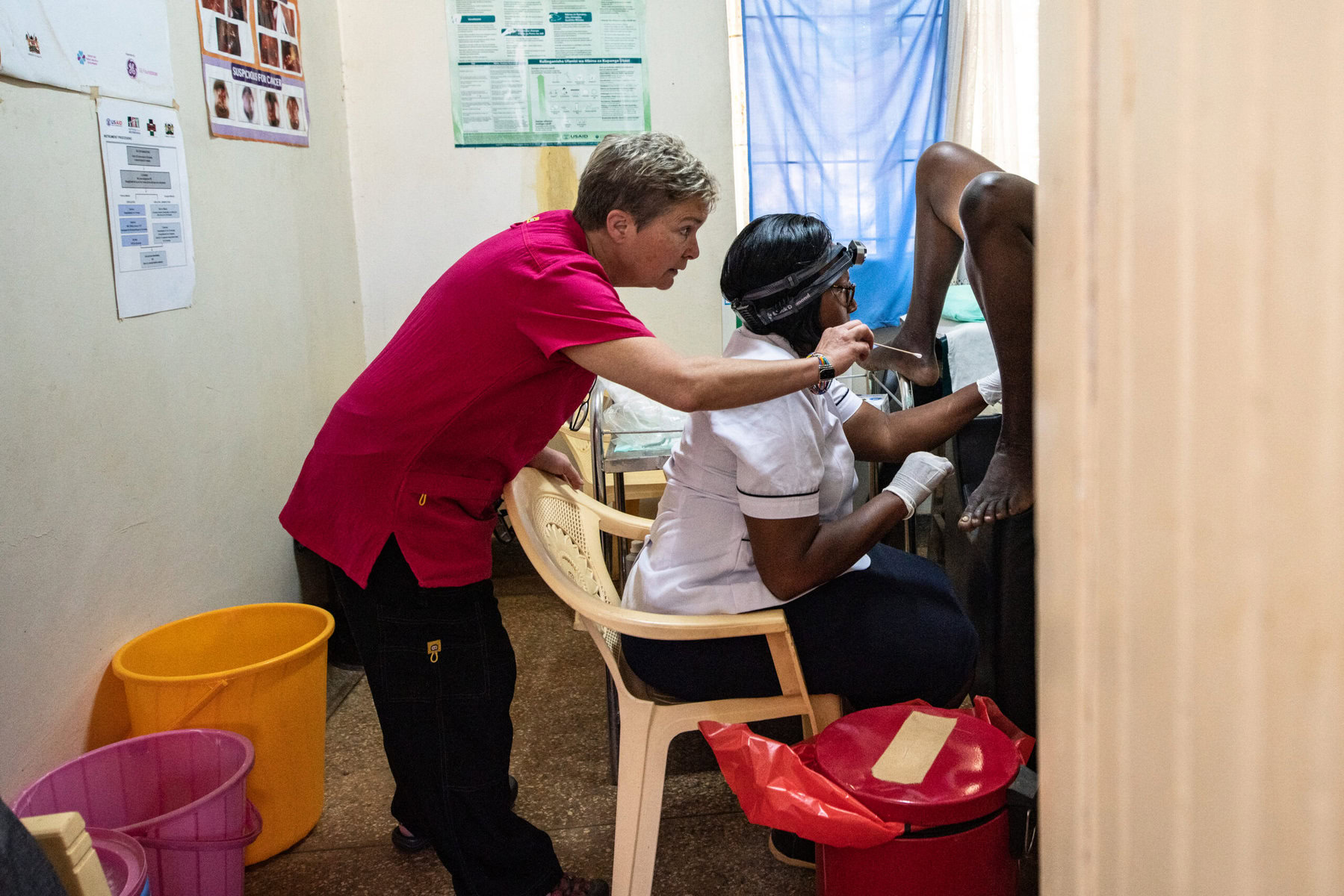
Six of the 47 women that Miskell’s team examines that day at Matibabu have precancerous cells and are treated on the spot, and one is diagnosed with cancer. When a biopsy reveals more advanced cancer, the nurses send the patients to a larger regional hospital for care, but in the case of the 32-year-old widow, the cancer has advanced too far for treatment, and all the doctors can offer is pain management and palliative care.
“Women are not dying because of untreatable diseases,” the late WHO scientist and OB/GYN Mahmoud Fathalia famously observed. “They are dying because societies have yet to make the decision that their lives are worth saving: We have not yet valued women’s lives and health highly enough.”
Nowhere is that more obvious than with cervical cancer. When the nurses detect abnormal cells (dysplasia) early, they can treat it immediately. Handheld thermocoagulation devices that the PINCC team delivers now make it possible to eradicate these precancerous cells in just 20 seconds. The white, battery-powered device fits into a backpack and costs less than $1,500, but delivers a powerful impact by applying targeted 100° Celsius heat that destroys the abnormal cells in the cervix. Miskell loves that it is easy to train the local health care staff on how to use it: “It is literally impossible to harm someone, so it’s a great device,” she says.
Godfrey agrees: “This is huge progress over the cumbersome cryotherapy that was previously used.” The expensive equipment required heavy nitrogen tanks that were difficult to transport and frequently broke down. He is hopeful: “New technology can change things in an instant.”
After the treatment, the staff ask the women to return in a year for a recheck.
“Women are essential not just in raising the children but they are also often the primary breadwinner,” Godfrey says. “They are crucial in holding the family together.”
PINCC’s goal is to achieve sustainability by “training the trainers.” The small PINCC team spends a training week in a hospital and leaves behind the state-of-the-art equipment. The local staff is then able to train other health care workers. The goal is to scale up the trainings, especially in Sub-Saharan Africa, Latin America and India, where cancer numbers are among the highest. All the services are offered for free.
“Twenty-five percent of all cervical cancers occur in India,” Miskell says with a sigh. “But it is an incredibly difficult place to make a big difference.” Her next expansion will be to Malawi, because it is the country with the most deaths from cervical cancer in the world. “We have limited resources so we need to prioritize the countries where the situation is dire,” says Miskell, who runs the NGO with just one full-time employee. But she has a list of 400 volunteers, mostly medical students, and the waitlist to attend the field trips is always full though the volunteers pay for their own travel costs.
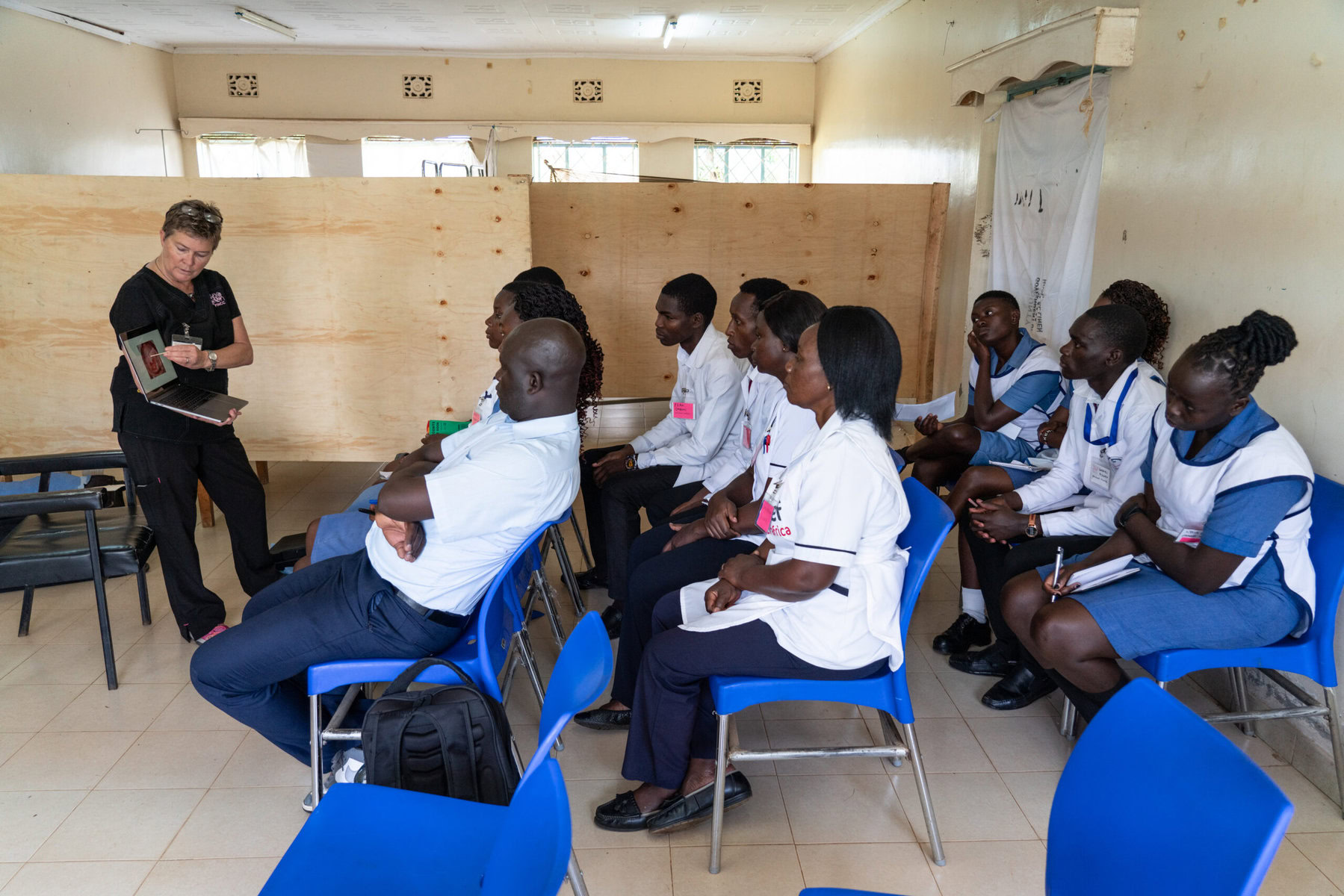
She is convinced that cervical cancer can and will be eradicated globally but believes it could take about 100 years. “This is how long it will take to really vaccinate all the young girls, screen all the women and treat those who have it,” she says. “Right now, we have made a difference in specific countries, for instance, Kenya’s rate of cervical cancer deaths has dropped from 19th in the world to 26th since we started there in 2017, but globally, the cancer numbers are yet to go down.”
In addition to Kenya, Godfrey has been bringing screening equipment to Guatemala, Bolivia, Nepal and Mexico. Each country has its unique set of challenges. For instance, the political volatility in Bolivia, which has the highest cervical cancer rates in South America, has hampered sustained efforts. But Godfrey is particularly hopeful about countries like India and Kenya: “I think we’re right at the beginning phase of this being an enormous medical revolution.”
Both Miskell and Godfrey praise Kenya’s efforts in taking the threat seriously. Ideally, girls get HPV vaccination while they’re between nine and 13 years old. Because vaccines and screenings are widely available in the US, only four out of 100,000 women in America get cervical cancer, whereas in Kenya, the rate is six times higher. “By offering more vaccines along with these new screening methods, Kenya can become a leading example for East Africa,” Godfrey believes. He will return in a year to see how much of a difference the new screening equipment he delivered has made.





